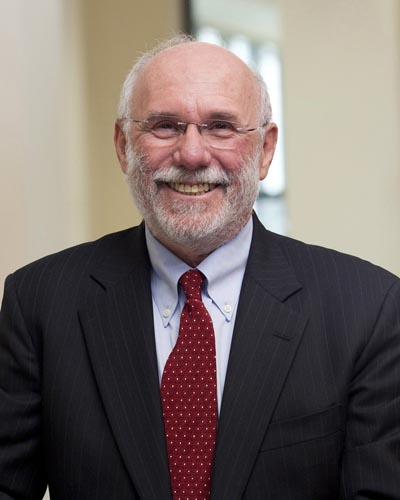January 13, 2017

University of Maryland School of Medicine Compares Methods for Blocking Rabies Transmission Among Stray Dogs
Every year in India, 20,000 people are estimated to die from rabies. Most of the victims are children. Nearly all of the deaths occur after victims are bitten by rabid dogs. For years, experts have debated the best strategy to reduce this burden.
Now, a new study has identified a cost-effective way to reduce death due to rabies. The research, led by a scientist at the University of Maryland School of Maryland (UM SOM) Center for Vaccine Development (CVD), was published recently in the journal Proceedings of the National Academy of Sciences.
The study focused on the Indian state of Tamil Nadu, in the south of the country. Researchers found that over the course of five years, vaccinating 200,000 stray dogs a year would reduce rabies incidence by 90 percent. They estimated this strategy would cost about $1.27 million annually.
“We wanted to evaluate the cost-effectiveness of different rabies control strategies,” said the lead researcher on the study, Meagan C. Fitzpatrick, PhD, a post-doctoral fellow at CVD. “Our goal was to maximize the impact of vaccination and/or sterilization on human health outcomes in the real world, where policymakers operate within cost constraints.”
The research team also included scientists from the Yale School of Public Health, the Public Health Foundation of India, the Harvard School of Public Health, and the London School of Hygiene and Tropical Medicine.
India accounts for more than a third of the world’s rabies deaths. Stray dogs are common and comprise approximately 42 percent of the total canine population in Tamil Nadu.
Dr. Fitzpatrick and her colleagues examined a range of strategies aimed at stray dogs, including vaccination as well as combined vaccination and sterilization. They also looked at different numbers of dogs captured and treated per day, to identify the most efficient scale for the program. The ten-year cumulative cost of these programs ranged from $12 million to $72 million. Indian decision-makers face competing health priorities, and as a result, reducing rabies must be cost-effective.
 The researchers used a measurement known as Disability-Adjusted Life Year, or DALY, to compare the efficiency of each approach. A DALY is defined as a lost year of healthy life. Dr. Fitzpatrick measured how many DALYs each strategy would save, allowing her to compare costs. Based on this approach, a strategy of vaccination without sterilization was the most efficient way to reduce death from rabies.
The researchers used a measurement known as Disability-Adjusted Life Year, or DALY, to compare the efficiency of each approach. A DALY is defined as a lost year of healthy life. Dr. Fitzpatrick measured how many DALYs each strategy would save, allowing her to compare costs. Based on this approach, a strategy of vaccination without sterilization was the most efficient way to reduce death from rabies.
Rabies is a viral disease of mammals that is usually transmitted via the bite of a rabid animal. In the U.S., most rabies cases involve wild animals such as raccoons, skunks, bats, and foxes. The rabies virus attacks the central nervous system, eventually causing disease in the brain and death. Death usually occurs within days of the appearance of symptoms (symptoms may not appear for a month or longer following a bite from a rabid animal). If people are treated within two or three days of being bitten, the human rabies vaccine is highly effective, and victims usually survive. As a result, rabies deaths are extremely rare in the U.S. Being bitten by a rabid animal is also very rare in the U.S. because nearly all domesticated animals are vaccinated. In India, however, victims often do not get treatment, either because they don’t know they’ve been infected, or don’t have the means to get to a clinic or to pay for treatment.
“This research exemplifies the global reach of our work,” said UM SOM Dean E. Albert Reece, MD, PhD, MBA, who is also the vice president for Medical Affairs, University of Maryland, and the John Z. and Akiko K. Bowers Distinguished Professor. “These findings could lead to the implementation of programs that have the potential to save hundreds or thousands of lives.”
About the University of Maryland School of Medicine
The University of Maryland School of Medicine was chartered in 1807 and is the first public medical school in the United States and continues today as an innovative leader in accelerating innovation and discovery in medicine. The School of Medicine is the founding school of the University of Maryland and is an integral part of the 11-campus University System of Maryland. Located on the University of Maryland’s Baltimore campus, the School of Medicine works closely with the University of Maryland Medical Center and Medical System to provide a research-intensive, academic and clinically based education. With 43 academic departments, centers and institutes and a faculty of more than 3,000 physicians and research scientists plus more than $400 million in extramural funding, the School is regarded as one of the leading biomedical research institutions in the U.S. with top-tier faculty and programs in cancer, brain science, surgery and transplantation, trauma and emergency medicine, vaccine development and human genomics, among other centers of excellence. The School is not only concerned with the health of the citizens of Maryland and the nation, but also has a global presence, with research and treatment facilities in more than 35 countries around the world.
medschool.umaryland.edu/
About the CVD
The CVD at the UM SOM works nationally and internationally to prevent disease and save lives through the development and delivery of vaccines. As an academic research center, CVD is engaged in the full range of vaccinology, including basic science research, vaccine development, pre-clinical and clinical evaluation, and post-marketing field studies. medschool.umaryland.edu/cvd
Learn More
• Journal: Proceedings of the National Academy of Sciences
• Center for Vaccine Development (CVD)
Contact
Office of Public Affairs
655 West Baltimore Street
Bressler Research Building 14-002
Baltimore, Maryland 21201-1559
Contact Media Relations
(410) 706-5260
Related stories

Tuesday, April 30, 2024
Miriam K. Laufer Appointed Interim Director of the Center for Vaccine Development and Global Health
University of Maryland School of Medicine (UMSOM) Dean, Mark T. Gladwin, MD, announced that Miriam K. Laufer, MD, Professor of Pediatrics, Medicine, and Epidemiology & Public Health, has been appointed as the Interim Head of UMSOM's Center for Vaccine Development and Global Health (CVD).

Tuesday, April 30, 2024
Miriam K. Laufer Appointed Interim Director of the Center for Vaccine Development and Global Health
The University of Maryland School of Medicine (UMSOM) Dean, Mark T. Gladwin, MD, announced that Miriam K. Laufer, MD, Professor of Pediatrics, Medicine, and Epidemiology & Public Health, has been appointed as the Interim Head of UMSOM's Center for Vaccine Development and Global Health (CVD).

Tuesday, December 20, 2022
COVID Vaccines Prevented 3 Million Deaths in the U.S., New Analysis Finds
In the two years since the first COVID-19 vaccines were given to patients in the U.S., the vaccines had the cumulative effect of preventing 18 million hospitalizations and 3 million deaths. That is based on a new modeling analysis conducted by a researcher at the University of Maryland School of Medicine (UMSOM) and her colleagues. Results of the analysis were published by the Commonwealth Fund.

Tuesday, February 25, 2020
World Health Organization Names UMSOM Faculty Member as COVID-19 Advisor
Samba Sow, MD, MSc, FASTMH, Director General of the Center for Vaccine Development in Mali (CVD-Mali), and Adjunct Professor of Medicine at the University of Maryland School of Medicine (UMSOM), was appointed by the World Health Organization (WHO) to serve as a special envoy on issues related to coronavirus COVID-19.

Tuesday, March 20, 2018
UMSOM Vaccine Experts Lead Trial on Avian Flu Vaccine
Vaccine experts at the University of Maryland School of Medicine (UMSOM) have begun multiple clinical trials of vaccines designed to protect against H7N9, an avian influenza virus that was first reported in humans in 2013 in China.

Tuesday, November 21, 2017
UM SOM Scientist Elected as Fellow of American Society of Tropical Medicine and Hygiene
Robert Edelman, MD, a Clinical Professor of Medicine and Pediatrics at the University of Maryland School of Medicine (UM SOM), has been elected as a Fellow by the Board of Directors of the American Society of Tropical Medicine and Hygiene (ASTMH). This honor was awarded for his sustained professional excellence in tropical medicine, hygiene, global health, and related disciplines.

Friday, December 23, 2016
Trial Results Confirm Ebola Vaccine Provides High Protection Against Disease
An experimental Ebola vaccine was highly protective against the deadly virus in a major trial in Guinea, according to a new study that included researchers from the University of Maryland School of Medicine (UM SOM).
